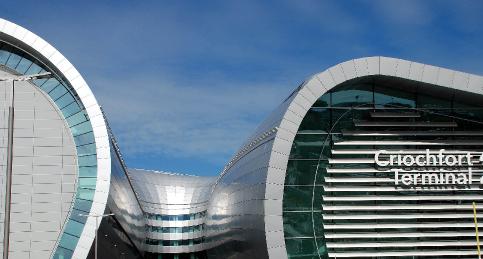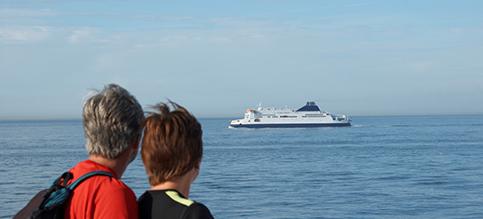
Travel and Visa
Getting to Dublin is increasingly easy and popular with many airlines, Etihad, Emirates and United Airlines, opening new routes in recent years. With the emergence of low cost air-travel, along with traditional carriers, it has never been easier or less expensive to travel to Dublin.
Even though Ireland is an island, access is easy by sea for both ferry and cruise. Passengers arriving in Dublin have a choice of two disembarkation points, depending on which ferry or cruise company is used. Dublin Port is centrally located, only minutes from the city centre while Dun Laoghaire Port is situated to the south of the city, approximately 30 minutes from the centre. There are excellent ferry connections daily from the UK and mainland Europe, while the capital also hosts in excess of 100 cruise liners annually which is of growing popularity for visitors to include Dublin on their travel itineraries.
A good option for visitors looking to co-ordinate public transport in Ireland is transportforireland.ie. The website brings together service information, directions and time estimates for bus, tram and rail transport in the city.
 Look up airline flights and ferry routes
Look up airline flights and ferry routes

Air access to Dublin
Getting to Dublin is a breeze. Dublin Airport is one of the busiest in Europe, with hundreds of daily flights providing a huge range of options to get here.
Direct flights are available from most major cities in the UK and continental Europe, several hubs in North America, and the Gulf cities of Dubai and Abu Dhabi. Connecting hubs hook up with further flights from all over the world, providing for easy access to the Irish capital.
Dublin Airport has two terminals. Terminal 1 is the arrival and departure point for airlines including Ryanair, Air France, Flybe.com, Germanwings, Iberia, Lufthansa, Norwegian and SAS. Terminal 2 is the hub for Emirates, Etihad and transatlantic flights by American Airlines, US Airways, United Airlines, Delta, Air Canada and Aer Lingus (Ireland’s national airline, whose UK and continental flights are also based in T2).
Dublin Airport is 10km from the city. It’s located close to the M50 and M1 motorways, and a range of transport options connect directly with the city centre and suburbs. Aircoach, Airlink and Dublin Bus provide bus services from both terminals, and metered taxis are also readily available. There is currently no direct rail link between airport and city.
 Find out more about airlines, routes and airport access
Find out more about airlines, routes and airport access

Ferry and cruise access to Dublin
Want to bring your car or campervan to Dublin? Simply prefer the comfort, convenience and baggage freedom of ferry travel? Or perhaps you are arriving on a cruise liner? Dozens of routes serve two ports in the city.
Dublin Port is located two miles from the city centre, with Irish Ferries offering several daily cruise and fast ferry options from Holyhead. Irish Ferries Ulysses is the largest car ferry in the world, carrying up to 2,000 passengers on a 3 hour 15 minute crossing. Fast sailings take just under two hours. Dublin Port is Ireland's most popular port for hosting criuise liners and currently caters for in excess of 80 liners annually.
Stenaline operates the Stena Adventurer and Nordica between Holyhead and Dublin Port, with four daily sailings each way. The Isle of Man Steam Packet Company connects the Isle of Man to Dublin in just under three hours, while P&O Ferries takes car passengers between Liverpool and Dublin (i.e. not foot passengers).
Dublin Bus connect Dublin Port with the city’s main bus station and city centre by the number 53 bus (fares need to be paid with coins, smart cards or pre-paid tickets) and taxis are readily available too.
 Check the ferry routes and start planning your journey
Check the ferry routes and start planning your journey
Visa requirements
In order to find out if you require a visa for entry to Ireland, whether by air, sea or land, please liaise with your local Irish Embassy or other diplomatic representative before you travel. An Irish visa is a certificate placed on your passport or travel document to indicate that you are authorised to land in the State subject to any other conditions of landing being fulfilled. This means that you will still be subject to immigration control at the point of entry to the State even if you have a visa.
In 2011, a Visa Waiver Programme was introduced covering 16 countries that currently require a visa to visit Ireland. This Programme allows nationals of countries such as India, China and the Russian Federation, who have a short-term UK visa, to come to Ireland without the need for a separate Irish visa. The Programme will end on 31 October 2016.
 Find out more about the Visa Waiver Programme (102.26 K)
Find out more about the Visa Waiver Programme (102.26 K)
 Find out more about all visa requirements for Ireland
Find out more about all visa requirements for Ireland


